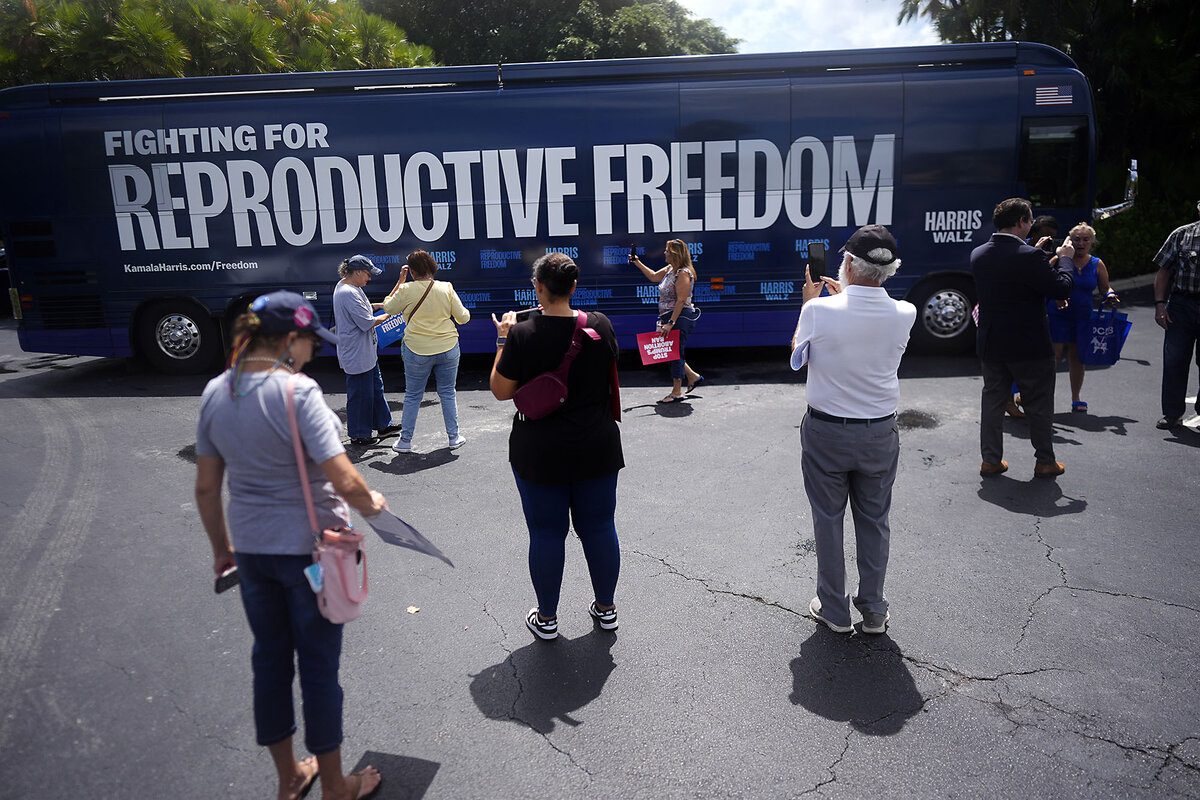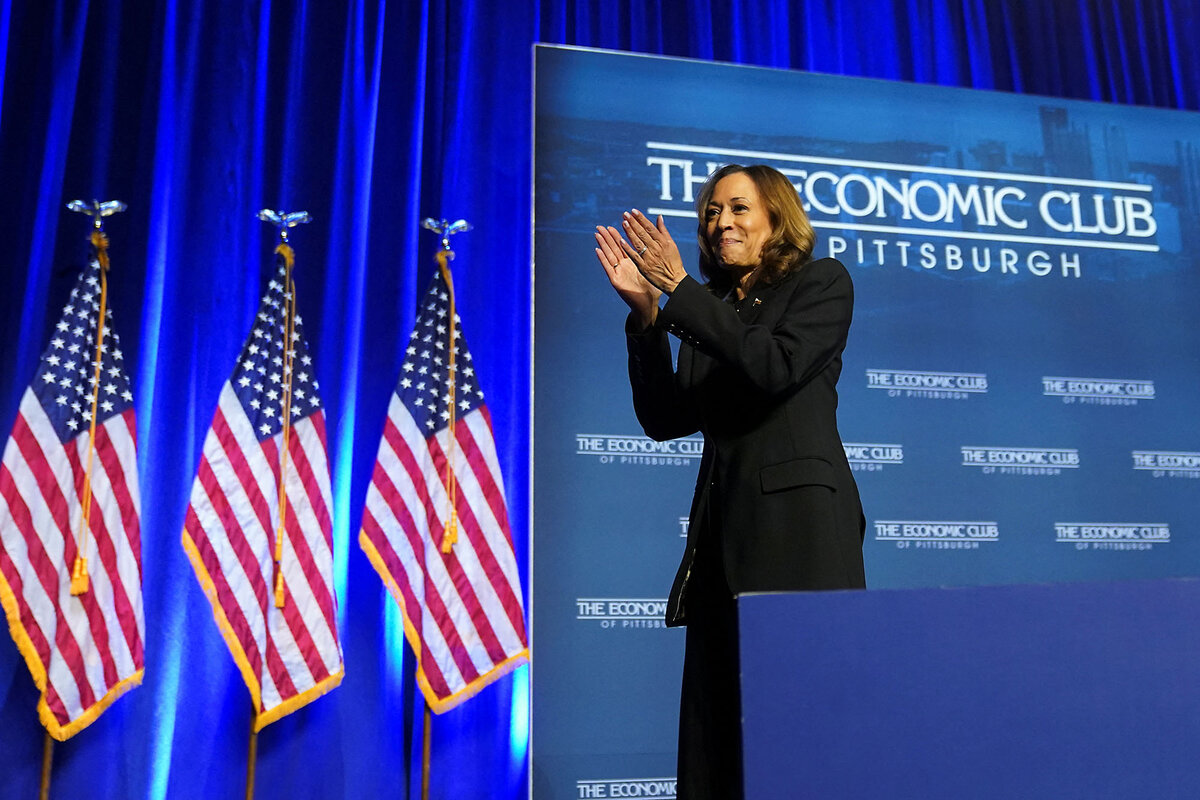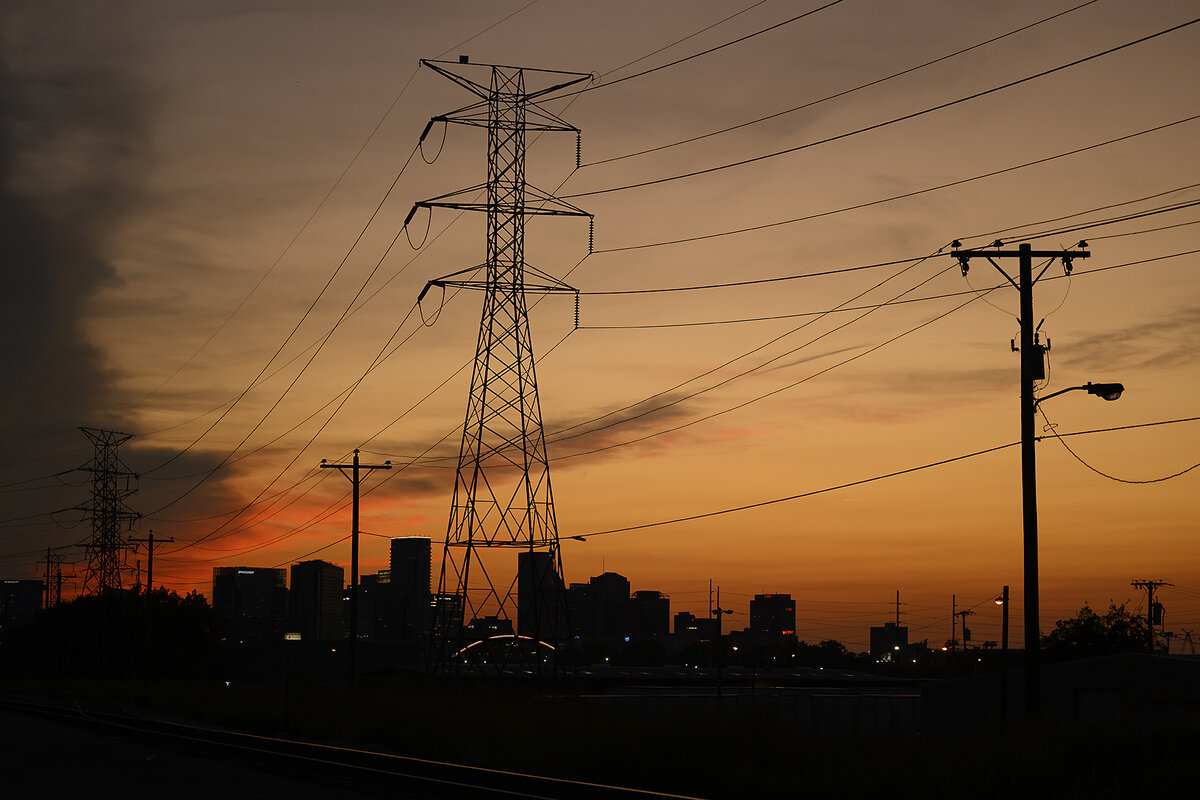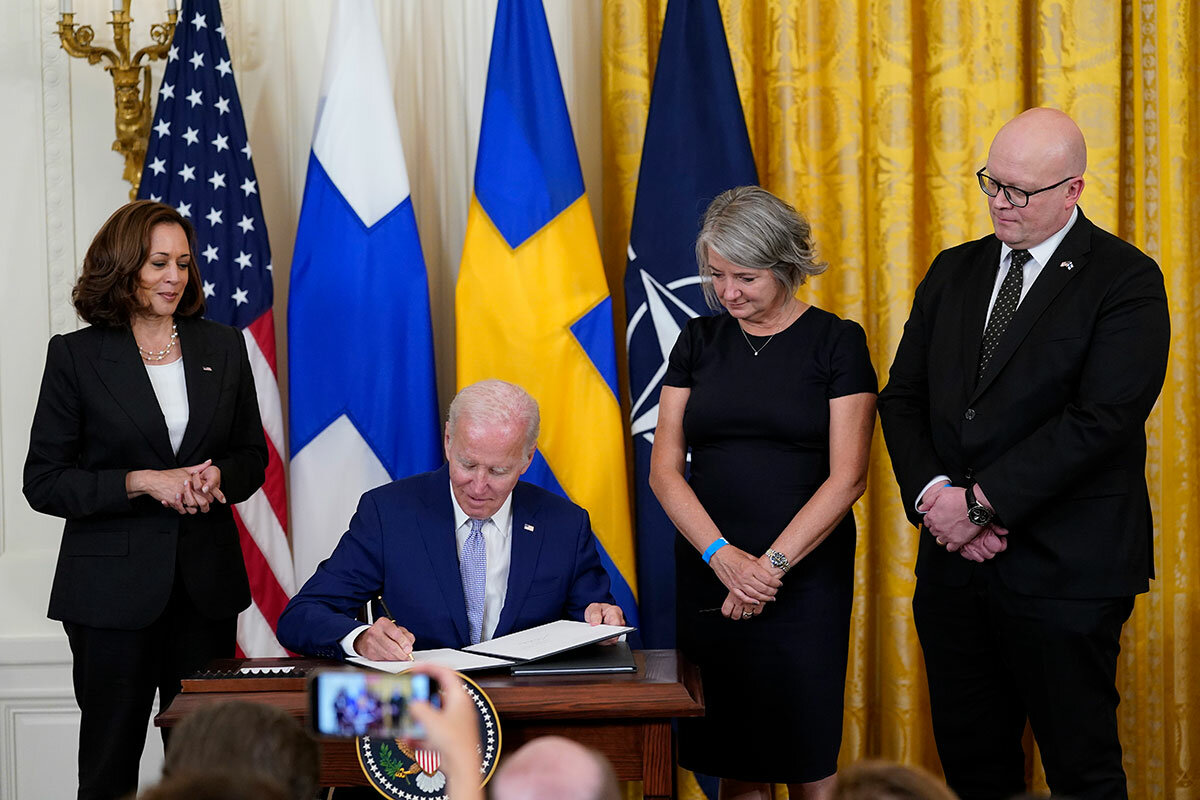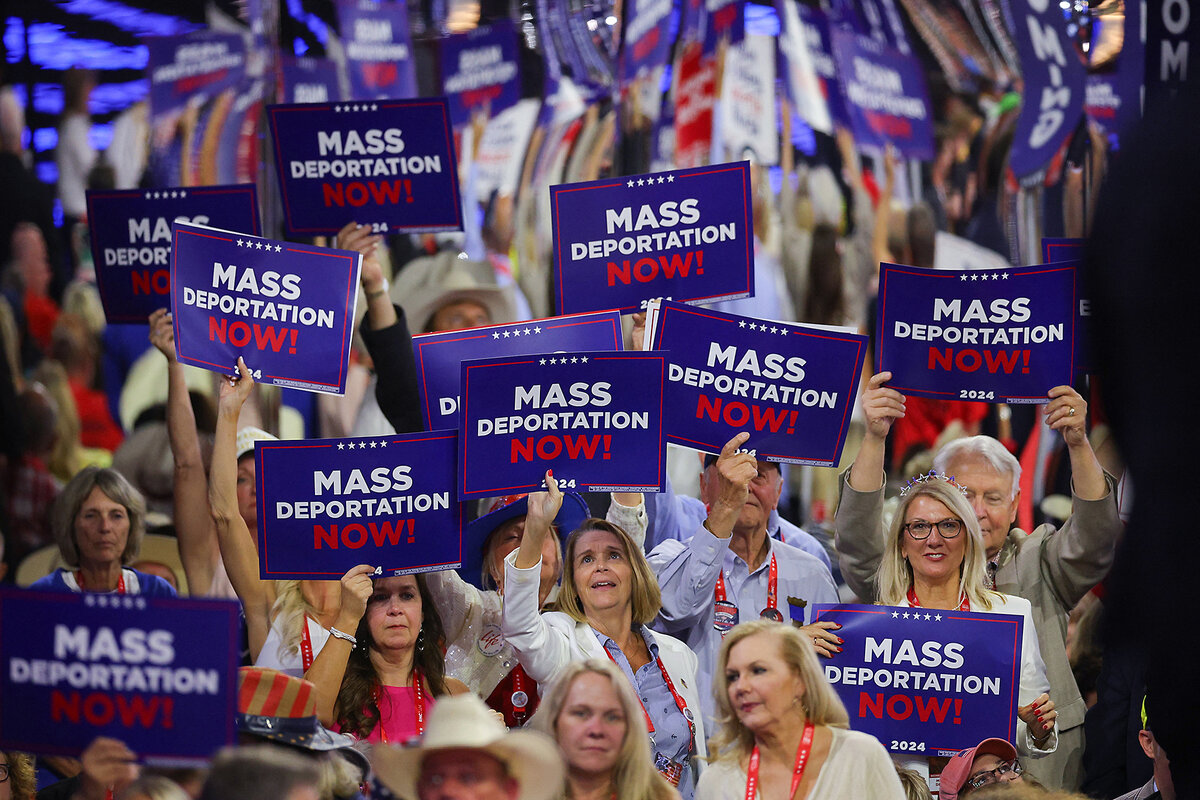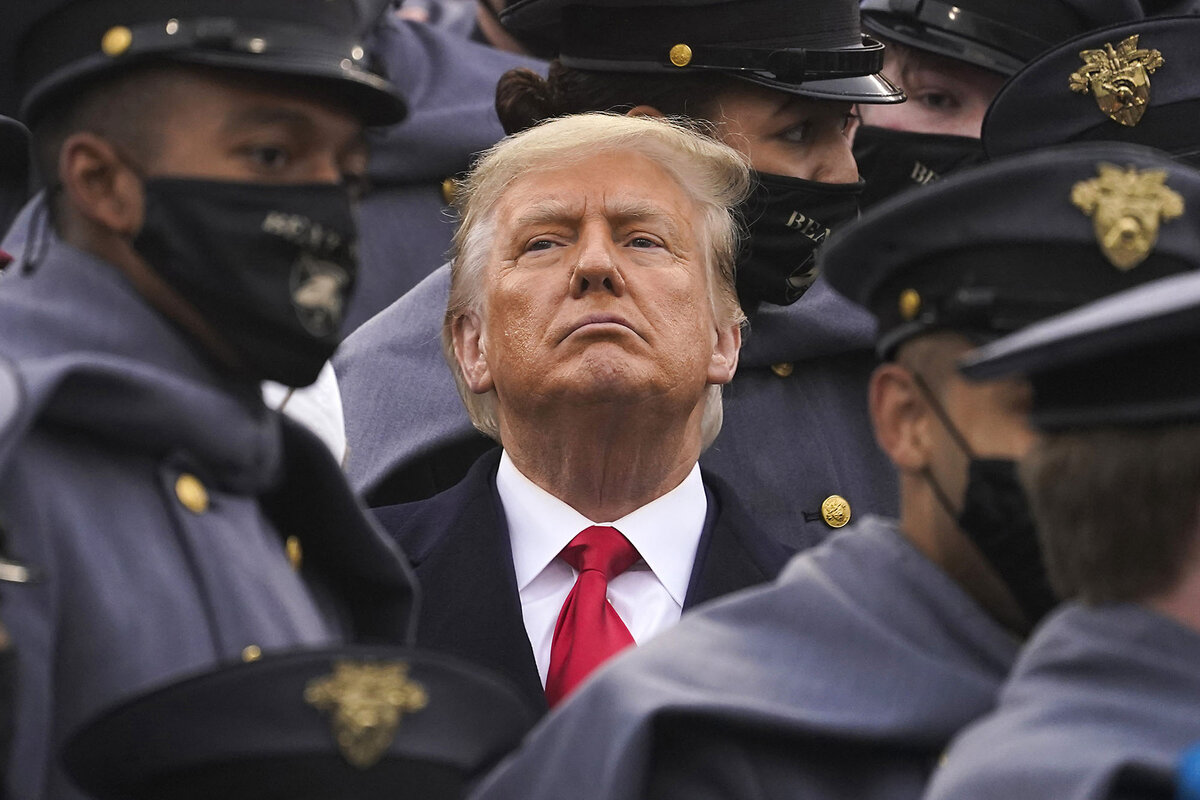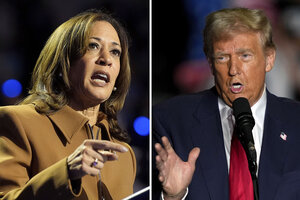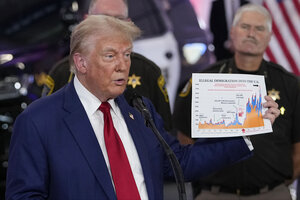Harris vs. Trump: Where they stand on the big issues
Loading...
As the presidential race enters the critical final phase before Election Day, the candidates are mobilizing their last blitz of podcast interviews, political ads, and get-out-the vote efforts.
The majority of voters, meanwhile, are worried about the election. And 52% of Americans say it’s “difficult to determine what is true and what is not” about the candidates and their campaigns when following news coverage, according to Pew Research Center.
To help readers understand Vice President Kamala Harris’ and former President Donald Trump’s positions on key topics, this article and a related series are examining “Harris vs. Trump: Where they stand on the issues.”
From economy to immigration, the summary of our series is below, with links from each topic to the longer story about each issue.
Abortion
Access to abortion is one of the hottest topics in the 2024 election – the first presidential contest since the U.S. Supreme Court overturned Roe v. Wade in June 2022.
- Former President Trump celebrated the end of the half-century Roe era, and took credit for appointing three justices who helped remove the nationwide right to abortion. But in his 2024 campaign he has tried to indicate he’s not an absolutist. He recently said he would veto a potential federal abortion ban, “because it is up to the states to decide based on the will of their voters” and that restrictions on abortion should include “exceptions for rape, incest, and the life of the mother.”
- Vice President Harris has been a strong supporter of abortion rights throughout her political career. She is focused primarily on hewing a legislative path to restoring nationwide abortion rights, with a bill “codifying Roe,” or guaranteeing a right to abortion up to fetal viability.
Read the full story by Linda Feldmann: Abortion to IVF: Where Harris and Trump stand on reproductive issues
Economy
In some ways the candidates’ plans are similar. Both pledge to keep taxes low for the vast majority of Americans. Both favor efforts to produce more goods at home rather than importing them. And in pursuing their policies, both largely ignore an ever-rising national debt. But they have big differences, too.
- Ms. Harris says that, with the 2017 Trump tax cuts set to expire, she won’t raise taxes on personal incomes below $400,000. But she calls for a tax hike for corporations and high-income Americans. In her plan the top personal income tax rate would rise from 37% to 39.6%; a new tax would hit unrealized capital gains of the ultra rich. She also seeks to expand the the child tax credit, and to create an “America Forward tax credit” to invest in strategic industries. Ms. Harris has promised to respect the Federal Reserve’s independence to set monetary policy.
- Mr. Trump has said he wants to impose a 60% tariff on all Chinese imports and a 10% to 20% tariff on imports from everywhere else to boost U.S. manufacturing jobs. He aims to extend his expiring tax cuts from 2017, and to cut corporate taxes on domestic production. His promise to deport unauthorized immigrants would reduce the overall number of workers and consumers in the economy. Mr. Trump has also said that he thinks the U.S. president should have some say on how the Fed sets interest rates.
Read the full story by Laurent Belsie: Harris and Trump spar over economic impact of taxes and tariffs
Energy and climate change
Both candidates paint a future with abundant energy. While differing on which energy sources they support, for instance, both have said they want it to be easier for energy companies to get approval for new infrastructure.
- Ms. Harris puts her focus on developing what many experts see as the next generation of energy – wind, solar, and other renewables. She recently promised that she would “confront the climate crisis with bold action,” and a major priority would likely be to continue the major clean energy investments funded by the 2022 Inflation Reduction Act.
- Mr. Trump is a big booster of fossil fuels – the coal, oil, and gas that have long formed the base of the U.S. energy economy. He has said he would withdraw the United States from the world’s main climate agreement. Support could diminish for regulations focused on climate change – and for the federal agencies involved in those regulations – judging by what occurred in the Trump presidency from 2017-2021.
Read the full story by Stephanie Hanes: Harris and Trump think big on energy – in very different directions
Family issues
Family is perhaps unusually visible as a priority in the presidential campaign. Issues of safety, education, financial security, gender roles, even immigration, all funnel into a family framework. The campaigns agree on certain goals but differ in policies.
- Ms. Harris would raise the Child Tax Credit based on a child’s age – to $6,000 for newborns, $3,600 for children under 6, and $3,000 per child age 6 to 17. She suggests that no family should pay more than 7% of their income for child care. She pledges to fight attempts to pull public funding from public schools.
- Mr. Trump calls for extending his 2017 tax cuts, which doubled the maximum Child Tax Credit to $2,000. His platform proposes tax credits for unpaid family members who care for loved ones full time. On education, which is largely controlled at the local level, candidate Trump emphasizes parental rights and school choice – and eliminating the Department of Education.
Read the full story by Ali Martin: How Harris and Trump both put family issues front and center, from IVF to schools
Foreign Policy
For many analysts, the biggest difference between the two presidential candidates when it comes to U.S. relations with the world can be boiled down to two words: multilateral and unilateral.
- Ms. Harris is seen as a champion of America’s traditional role, leading alliances of like-minded democracies like NATO and promoting the postwar liberal world order.
- Mr. Trump is seen as more comfortable with the idea of the U.S. defending its own interests in an era of rising big-power competition.
Read the full story by Howard LaFranchi: The Trump-Harris worldview divide: Fly solo, or with allies?
Housing
America’s shortage of affordable housing increasingly affects communities nationwide. Home prices hit an all-time high this year, and about 1 in 4 renters spend more than half their income on housing and utilities.
- Ms. Harris sets a goal of 3 million new housing units in her first four years. She proposes a $40 billion Innovation Fund for Housing Expansion, which would encourage more flexible local zoning and expanded development. She also calls for a $25,000 down payment credit for first-time homebuyers, and pledges to curb price-fixing among corporate landlords.
- Mr. Trump promises general low inflation and deregulation, which would allow mortgage rates to fall and homes to be built more cheaply. He points to his restrictive immigration policies as a solution to easing housing demand.
Read the full story by Laurent Belsie: How Harris and Trump propose fixing the U.S. housing crisis
Immigration and border security
What the next president can accomplish on immigration will partly depend on factors beyond their control – other countries, courts, and Congress, which hasn’t united on major immigration reform since the 1990s.
- Ms. Harris, a longtime immigrant advocate, has taken a right turn on this issue amid public pressure over a historic influx of unauthorized migrants under President Joe Biden. The Biden-Harris White House has touted a reduction in illegal border crossings in recent months following new asylum restrictions, along with enforcement help from Mexico. She says fixing the broken immigration system falls on Congress, and blames Mr. Trump for tanking a bipartisan bill on border security.
- Mr. Trump has said he’d involve the military in the “largest deportation operation in American history,” calling illegal immigration an “invasion.” He also supports limiting legal immigration, including resettling refugees. In addition, Mr. Trump also says he’ll resurrect the “Remain in Mexico” policy from his time in office, which made asylum-seekers who arrived at the southern border wait in Mexico rather than the U.S. ahead of immigration court dates.
Read the full story by Sarah Matusek: On immigration, Harris and Trump talk tough – with critical differences
National security and the military
When it comes to how to address vital national interests, Vice President Kamala Harris and former President Donald Trump differ sharply. Big differences exist on two current hot spots: Ukraine and the Middle East.
- Ms. Harris is expected to continue the White House’s military support for Ukraine’s efforts to repel Russia’s invasion and illegal occupation. On Gaza, while she condemns Hamas’ Oct. 7 attack and emphasizes that Israel has a right to defend itself, she also says she “will not be silent” about the suffering of Palestinians.
- Mr. Trump has promised to end fighting in Ukraine in one day through negotiations. Without offering specifics, he’s implied he could do this in part by lifting U.S. sanctions against Russia. On the Middle East, he has said that Israel needs to get its war in Gaza “done quickly” and that Israel should “hit” Iran’s nuclear facilities.
Read the full story by Anna Mulrine Grobe: On military policy, Trump and Harris offer starkly different approaches








